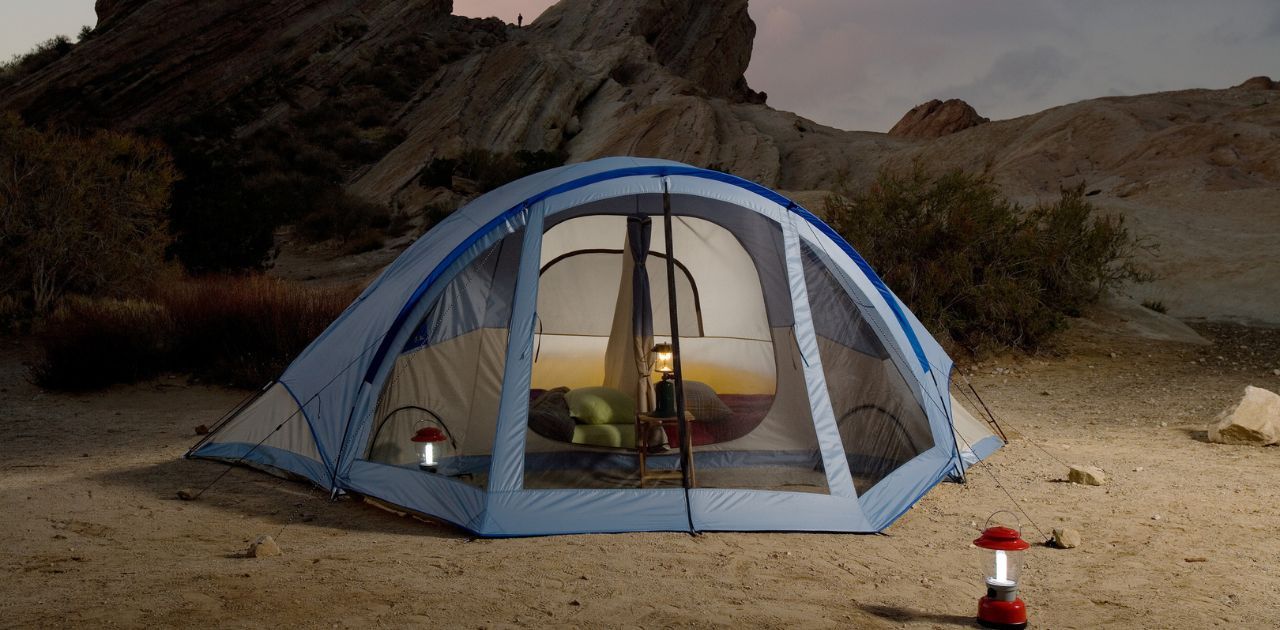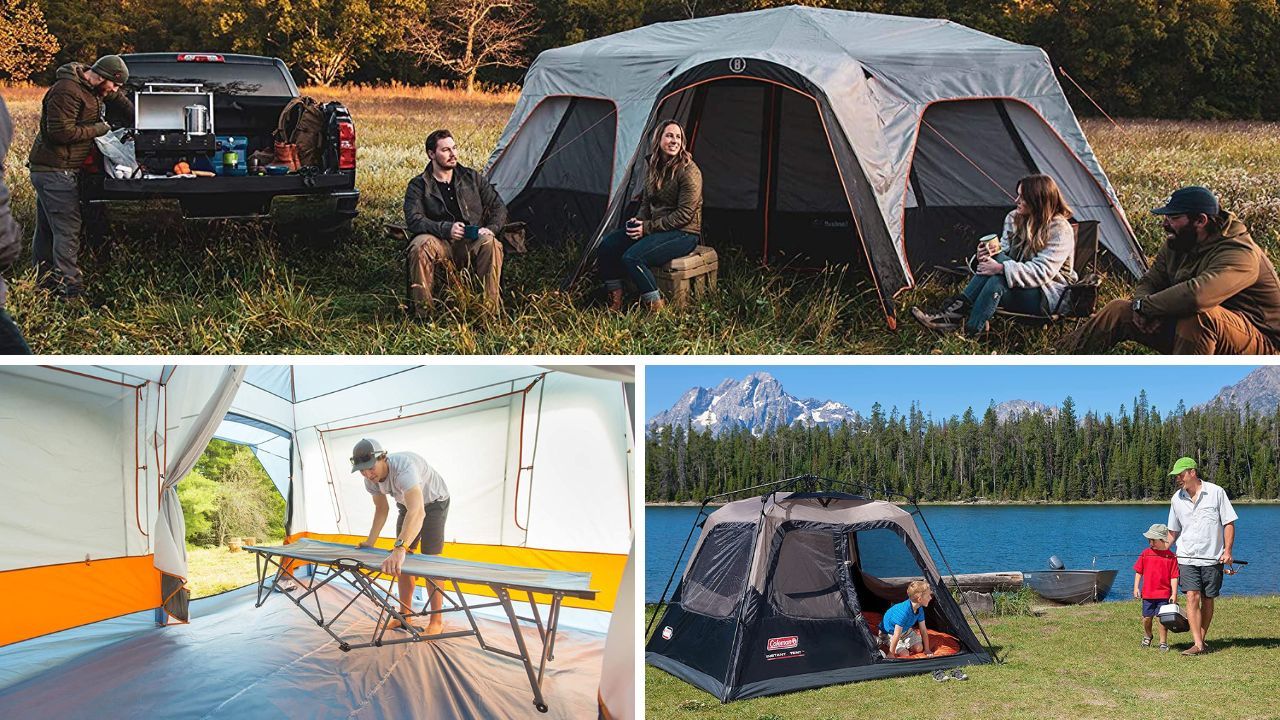
What Is a Footprint For a Tent | Stop Ruining Your Tent!
Do you want to know how to protect your tent and keep it in like-new condition? Let's take a look at what a footprint is and why it's important.
So, you're planning your next camping trip and you hear someone mention the "tent footprint."
"Wait, what?" you think to yourself.
"I already have a tent, what more could I need?"
Well, my friend, you're in luck because we're about to shed some light on this mysterious camping accessory.
What is a Tent Footprint?
A tent footprint, in short, is an extra layer of protection that goes underneath your camping tent.
It’s made from durable materials and is designed to protect your tent from the rough ground and moisture in the environment. Think of it like a protective case for your phone, but for your tent.
How is it Different from a Groundsheet?

You may be thinking, "Isn't a groundsheet the same thing?"
While similar, a groundsheet or ground cloth is typically thinner and provides minimal protection.
- It acts more as a barrier between the tent and the ground, but doesn't protect the underside of the tent from sharp rocks, sticks, or other sharp objects that could puncture or damage the tent.
- On the other hand, a tent footprint is usually thicker and provides a more robust protective layer, shielding your tent from both the environment and wear and tear.
Plus, if you're going barefoot or just wearing socks inside your tent, a tent footprint will protect your feet or socks from picking up dirt and debris from the ground.
Now some of you may be asking: "What if I don't use a footprint? What could possibly go wrong?"
Oh, you sweet summer camper, let me tell you... without a footprint, you run the risk of puncturing or tearing the floor of your tent, dealing with dampness and moisture, feeling that unwelcome cold ground underneath you, and ultimately cutting the life of your tent significantly shorter.
Why is it Important to Use a Footprint for Camping?

Here are a few reasons why using a tent footprint is important and helpful for camping:
- Protects tent floors from punctures and tears, extending its life
- Provides enhanced insulation and helps regulate temperature
- Blocks moisture from seeping into your tent, keeping you dry and cozy
Now that we've covered the basics of tent footprints, it's time to dive into their benefits and variations.
You may be thinking, "Do I really need a tent footprint?" We'll let you be the judge, but here are some things that a tent footprint can do for you.
Advantages of Using a Tent Footprint
- Protects the Tent from Damage: A lightweight backpacking tent is not cheap and the tent floor is usually very thin. The durable materials used to make a tent footprint create a protective layer between your tent and the rocky, rough, or wet terrain underneath, decreasing the likelihood of tent punctures or tears and increasing the lifespan of your investment.
- Helps Regulate Temperature: The extra layer provided by a tent footprint can help insulate your tent and regulate your temperature, making your next camping adventure an even more comfortable experience.
- Keeps the Interior Clean: A footprint can also help keep your tent floor clean when you're packing up and readying to head back to civilization.
- Multiple uses: Besides protecting your tent's floor you can also use it for a picnic blanket, taking a quick nap on, or as a ground sheet to protect your gear from getting dirty as you pack up.
Types of Tent Footprints

Tent footprints come in a variety of types and styles, each offering unique features depending on your needs. Here are some common types of tent footprints:
- Polyester fabric footprints: A popular choice due to their lightweight design and durability, these footprints are highly resistant to tearing and puncturing. Plus, they dry quickly if they get wet in the rain.
- Nylon footprints: These footprints are lightweight, provide a waterproof barrier, and are highly compressible - perfect for backpacking trips.
- Polyethylene footprints: The most durable option, polyethylene is a popular material for RV, car camping, and long-term use.
Features of Tent Footprints
Most tent footprints are designed to fit specific tent models and come in a variety of shapes and sizes. When selecting a tent footprint, you may want to consider these additional features:
- Grommets and Loops: These are added for added security and can help attach the footprint more securely to the tent.
- Color-Coded Corners: Color-coding makes it easy to line up the footprint with the tent, ensuring perfect placement every time.
- Waterproof Material: A waterproof tent footprint helps protect your tent from the effects of dampness and moisture, keeping you dry and comfortable all night long.
How to Choose the Right Footprint
When you seek to choose the right footprint for you, here are a few additional things to consider:
- Tent Size: Make sure you select the right size that matches your tent. Trying to adapt a footprint that is too big or too small could cause it to bunch and not laying flat, reducing its effectiveness.
- Material: Choose based on your needs for weight, durability, and waterproofing ability.
- Ease of Packing and Carrying: Ensure that the footprint you choose can be packed and transported easily with the rest of your gear.
- Compatibility with Existing Gear: Make sure any additional features of the footprint, i.e grommets or loops, are compatible with your existing tent.
How to Use a Tent Footprint

Using a tent footprint is extremely easy. Here are some basic steps to guide you:
- Unpack the tent footprint and lay it down in the desired location where you will set up the tent.
- Unpack the tent and lay it down on top of the footprint.
- Align the tent footprint with the edges of the tent. You can use grommets or loops to help align, attach, or stake the footprint to the ground.
- When packing up, remove the tent stakes from the footprint and shake out any dirt or debris. Avoid storing your footprint in a damp or moist state.
Tips for Proper Care and Maintenance
Tent footprints are easy to use and maintain, which means that they will last through many camping trips with the proper care. Here are some basic tips for keeping your footprint in good condition:
- Keep the footprint clean by wiping it down and maintaining it as per the manufacturer's instructions.
- Don't leave it out in the sun for extended periods, as UV rays can contribute to deterioration in the materials of the footprint.
- Don't store the footprint when wet, as this can increase the likelihood for mold or mildew growth.
How to Create a DIY Footprint

If purchasing a tent footprint is not in your budget, or you just enjoy DIY projects, you can make your own. Here is an easy guide to create your own DIY tent footprint:
Materials:
- Tarp or painter's canvas drop cloth
- Measuring tape
- Scissors
- Eyelets
- Eyelet punch tool
- Nylon cord
Instructions:
- Determine the size and shape of your tent footprint based on the size of your tent. Measure the length and width of the tent floor and add a few inches to each side.
- Use scissors to cut the tarp or canvas to the proper size and shape. You can either cut a rectangle or cut the tarp to the same shape as your tent floor.
- Punch holes around the edges of the footprint, about 1-2 inches apart from each other.
- Insert the eyelets in each hole and use the eyelet punch tool to secure them in place.
- Attach a nylon cord to one corner of the footprint, running it through the eyelets, and tying it off securely. Repeat this process for the other corners of the footprint.
- Your DIY tent footprint is now ready to use.
Just keep in mind that your DIY footprint may not be as durable as a footprint purchased for this purpose. So, use caution and avoid sharp rocks or objects that could damage the material.
There you have it - a simple way to make your own tent footprint and save some money in the process.
Bottom Line
Overall, a tent footprint is an essential item that many campers overlook but can ultimately make a significant difference in the comfort and longevity of your camping tent.
Not only does it provide added insulation, strong protection, and added longevity, but it also makes the camping experience more efficient and keeps your tent clean.
So, whether you're a seasoned camper or a newbie, investing in a high-quality tent footprint is definitely worth it. Happy camping!
Before You Go...





